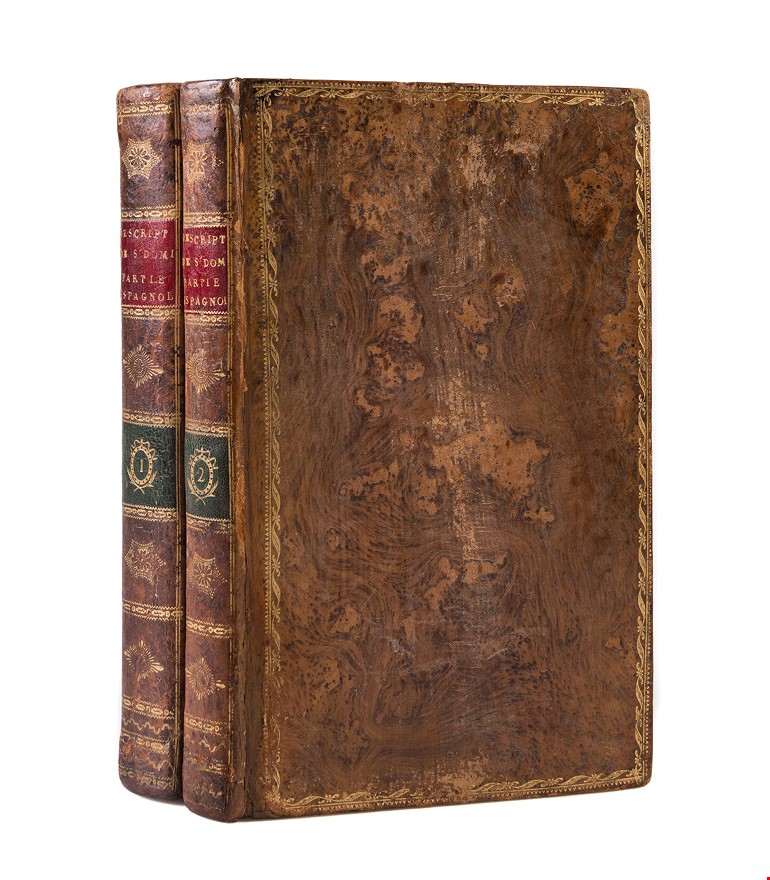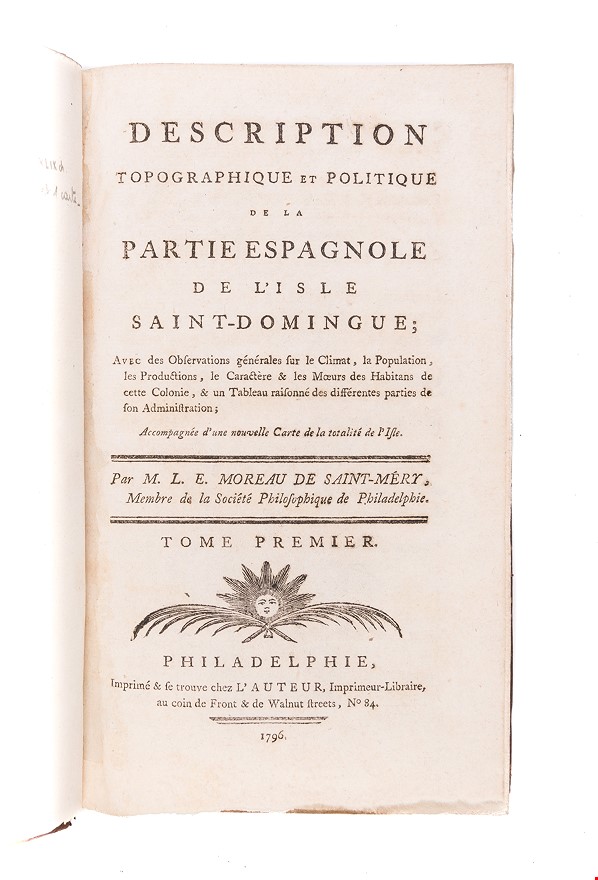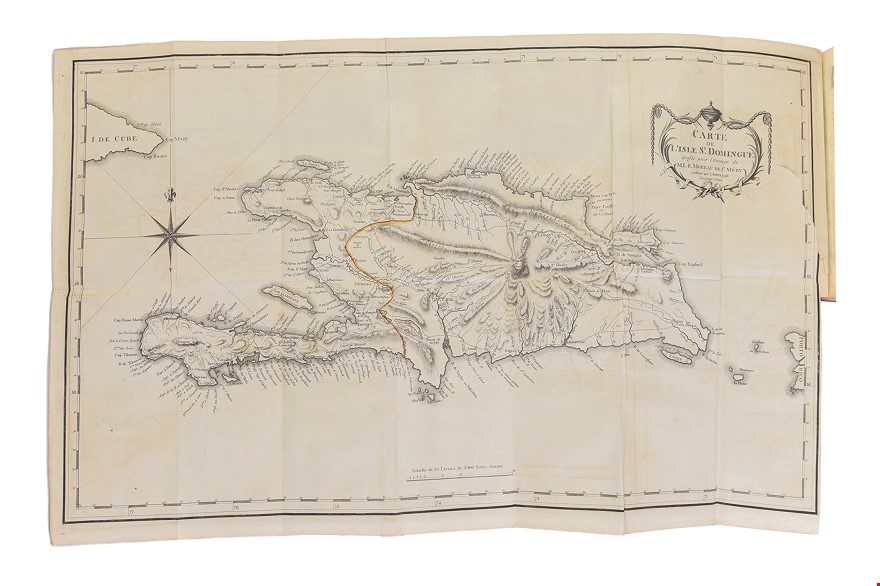Description Topographique et Politique de la Partie Espagnole de L'isle Saint-Domingue;
MOREAU DE SAINT-MÉRY M-L-E. (1796.)
£17500.00 [First Edition]
Please contact us in advance if you would like to view this book at our Curzon Street shop.
PRINTED IN PHILADELPHIA. WITH THE RARELY FOUND MAP
Avec des Observations générales sur le Climat, la Population, les Productions...
First edition. 2 vols. Folding map. 8vo. Contemporary French tree calf, elaborately gilt. 8, 307, [1errata]; 311, [1]pp. Philadelphia, Imprimé chez l'Auteur,
This is an extremely fine copy of a most uncommon Philadelphia imprint. It bears the engraved book label “Decrés” being that of the French Admiral who became Napoleon’s last minister of the Navy. Moreau de Saint-Méry issued four works concerning Hispaniola, his "massive research projects on the history, administration and society of the old regime's most opulent colony" (Garraway, 228).
In addition to his knowledge of colonial law and society, the author had privileged access to private archives and was able to solicit contributions from eminent residents of the island (ibid, 229). This title, which uniquely describes the Spanish part of the island is significantly rarer and very seldom appears complete with its map, which shows the complete island: Saint-Domingue as well as Santo Domingo.
Moreau de Saint-Méry was born at Port Royal, Martinique, in 1750. At the age of 19 he went to Paris, where he later became a Counsellor of State. He became a great advocate of reforms in the French colonies and lobbied for better treatment of the enslaved. That being said, he was aware of the distress of the white population at the ambitions of the free persons of colour, and in the 1780s “took a leading role in the pre-revolutionary assemblies in Paris as a spokesperson for the colonial elite, arguing polemically against mulatto rights and the proposals of the Société des Amis des noir” (ibid).
His fortunes took a turn for the worse and, hearing that Robespierre intended to have him arrested he fled from France and in 1793 went to the United States. Having lost all his property he turned his attention to business and established himself at Philadelphia as a bookseller and printer, and commenced his historical account of Haiti. In 1797, he published his history of the French side of the island which included a comprehensive racial taxonomy of the island with six different classes of miscegenation. In 1798 he was able to return to France, where he died in 1819. His works on the Island of Santo Domingo and other parts of the West Indies, are of great interest and value.
Evans, 30817; Sabin, 50570; Garraway, Doris, “Race, Reproduction and Family Romance in Moreau de Saint-Mery’s Description … de la Partie Francaise de l’isle St Domingue” in Eighteenth-Century Studies, Vol. 38, No.2 (Winter 2005), pp.227-246.
Stock Code: 208298






